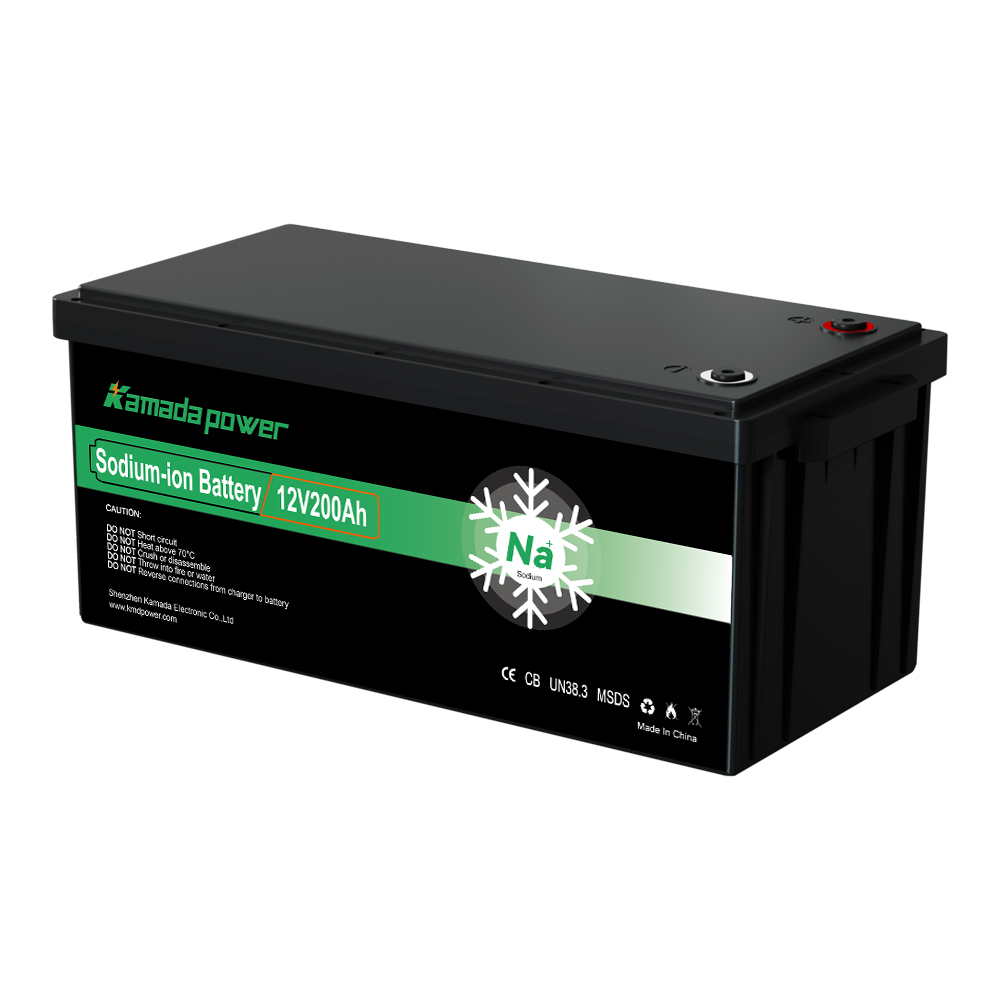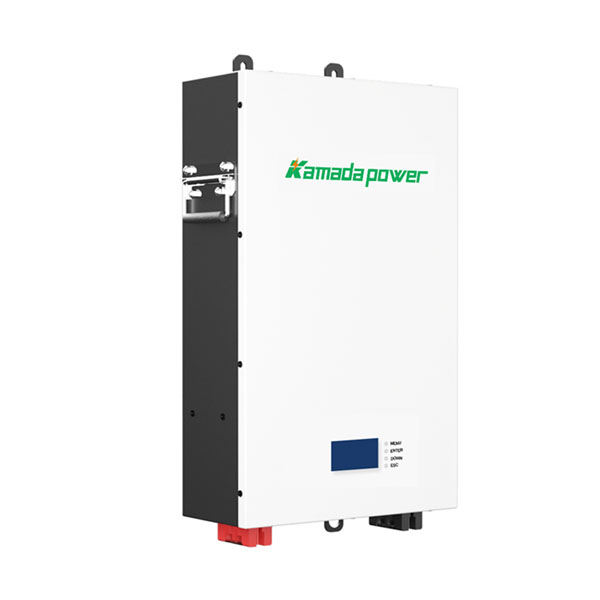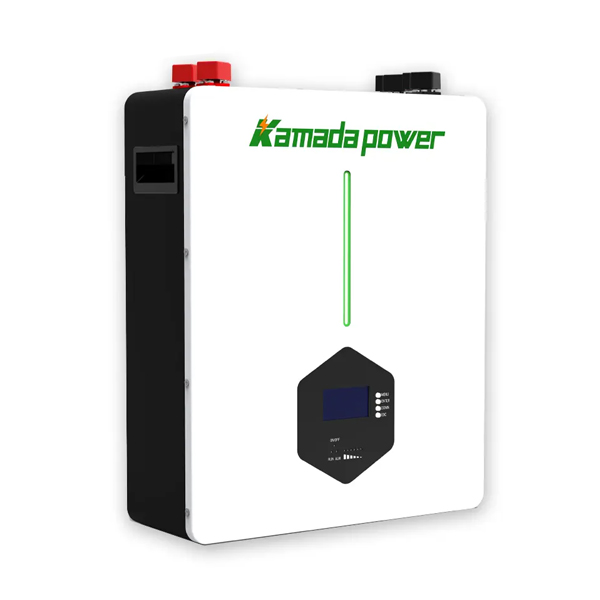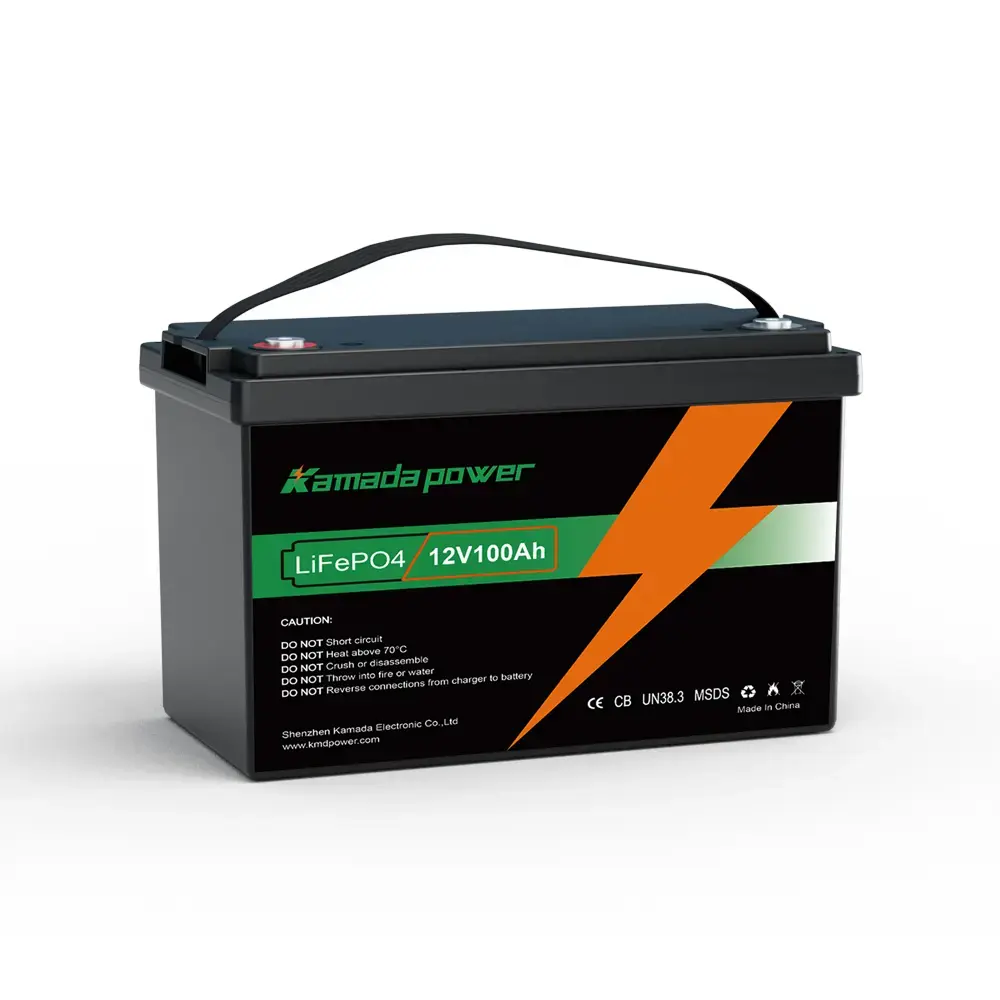Introduction
Kamada Power Lithium iron phosphate batteries (LiFePO4 or LFP Battery) offer lots of benefits compared to lead-acid batteries and other lithium batteries. Longer High Safety and Stability, Long Lifespan and Reliability, No Active Maintenance Required, Stable Voltage Output and High Energy Density,Wide Temperature Range and High Efficiency, Environmental Friendliness and Sustainability, Fast Charging and Low Self-Discharge Rate,Versatility in Applications,Cost-Effective with High ROI, just to name a few. LiFePO4 Batteries are not the cheapest in the market, but due to a long life span and zero maintenance, it’s the best investment you can make over time.
1. High Safety and Stability
- Brief Overview:
- We use only the highest quality batteries featuring the safest technology available today: Lithium Iron Phosphate (LiFePO4 or LFP).
- Enhanced chemical and thermal stability minimize risks of thermal runaway, overcharging, over-discharging, and short circuits.
- Advanced Battery Management System (BMS) monitors real-time current, voltage, and temperature, ensuring battery safety and reliability.
- Technical Details:
- Utilizing Lithium Iron Phosphate as Cathode Material for Stable Chemical Reactions:
- Value Proposition: LiFePO4 is a high-safety battery material known for its chemical stability, reducing instability factors caused by internal chemical reactions. This ensures the battery maintains high stability during both charging and discharging, significantly lowering the risks of thermal runaway, overcharging, over-discharging, and short circuits.
- Utilizing Lithium Iron Phosphate as Cathode Material for Stable Chemical Reactions:
- Incorporating Efficient Thermal Management and Heat Dissipation Design:
- Value Proposition: An efficient thermal management system swiftly and effectively regulates battery temperature to prevent overheating, reducing fire and other safety risks. Additionally, optimized heat dissipation design ensures rapid transfer and dissipation of internal heat, maintaining the battery’s operation within a safe temperature range.
- Incorporating Efficient Thermal Management and Heat Dissipation Design:
- Business Advantages:
- Electric Vehicles (EVs):
- Value Proposition: High safety and stability not only reduce accident risks for electric vehicles but also boost confidence among drivers and passengers. Moreover, this safety feature minimizes recalls and after-sales service needs due to battery failures, thereby lowering operational costs and enhancing overall economic benefits of the vehicle.
- Electric Vehicles (EVs):
- Solar Energy Storage Systems:
- Value Proposition: When operating outdoors or in harsh conditions, high safety and stability effectively mitigate risks of fires and safety incidents, significantly improving system reliability and durability. Furthermore, the advanced BMS system monitors battery status in real-time, ensuring optimal performance under various working conditions, thereby extending system lifespan and enhancing overall performance and economic benefits.
- Solar Energy Storage Systems:
- Mobile Devices and Portable Power Sources:
- Value Proposition: Users can use mobile devices and portable power sources with greater peace of mind, as these devices feature high-safety and stability battery technology that effectively prevents issues like overcharging, over-discharging, or short circuits. Additionally, the efficient thermal management system ensures stable and safe operation of devices even under high load or high temperature conditions, greatly enhancing device reliability and durability, providing users with longer usage time and a superior user experience.
- Mobile Devices and Portable Power Sources:
2. Long Lifespan and Reliability
- Quick Overview:
- Kamada Power Lithium Iron Phosphate (LiFePO4) batteries can cycle up to 5000 times at 95% depth of discharge, with a designed lifespan exceeding 10 years without performance degradation. In contrast, lead-acid batteries typically last only about two years on average.
- Utilizes high-purity, low-impedance battery materials and precise manufacturing processes.
- Technical Details:
- Optimized Electrode Structure and Electrolyte Formula:
- Value Proposition: The optimized electrode structure ensures battery stability and efficiency during charge and discharge cycles, while the special electrolyte formula offers improved conductivity and lower internal resistance. This combination extends battery lifespan and ensures reliability, especially during high-frequency charge and discharge cycles.
- Optimized Electrode Structure and Electrolyte Formula:
- Advanced Electrochemical Stability and Redox Reactions Minimize Material Degradation:
- Value Proposition: High electrochemical stability of the battery ensures long-term reliability and reduces the generation of harmful substances from reactions, thereby extending battery lifespan. Additionally, effective management of redox reactions minimizes material degradation, enhancing overall economic benefits.
- Advanced Electrochemical Stability and Redox Reactions Minimize Material Degradation:
- Business Advantages:
- Residential and Commercial Energy Storage Systems:
- Value Proposition: The long lifespan and reliability of the battery mean users can utilize energy storage systems for extended periods without battery replacement, reducing maintenance costs and downtime. This not only improves the economic benefits of the system but also meets users’ demands for long-term and stable energy supply.
- Residential and Commercial Energy Storage Systems:
- Electric Vehicles (EVs):
- Value Proposition: Electric vehicle batteries require durability and reliability over extended periods. A long-lasting battery reduces user maintenance and replacement costs, and when users decide to replace their vehicles, a high-quality battery increases the vehicle’s resale value, enhancing brand reputation and market appeal.
- Electric Vehicles (EVs):
- Emergency Power Supplies and Grid Stability:
- Value Proposition: In critical emergency situations and essential facilities, battery stability and reliability are crucial. A long-lasting battery ensures continuous power supply during critical moments, safeguarding public safety and service continuity. Meanwhile, the battery’s reliability also strengthens overall grid stability and availability, reducing the risk of power outages and service interruptions due to battery failures.
- Emergency Power Supplies and Grid Stability:
3. No Active Maintenance Required
- Quick Overview:
- Kamada Power Lithium Iron Phosphate (LiFePO4) batteries require no active user maintenance, naturally extending their lifespan.
- Technical Details:
- Low Self-Discharge Rate Advantage
- Value Proposition: Due to its low self-discharge rate, Kamada Power LiFePO4 battery has a monthly self-discharge rate of less than 3%. This means the battery can maintain its high-performance state even during long-term storage or periods of inactivity without the need for frequent charging or maintenance.
- Low Self-Discharge Rate Advantage
- Business Advantages:
- Cost-Efficiency and Convenience
- Value Proposition: Eliminating the need for active user maintenance, Kamada Power Lithium Iron Phosphate batteries (LiFePO4) battery reduces maintenance costs and time, allowing for longer storage periods. In contrast, lead-acid batteries require special maintenance; otherwise, their lifespan is further shortened. This offers users greater cost-efficiency and convenience.
- Cost-Efficiency and Convenience
4. Stable Voltage Output and High Energy Density
- Quick Overview:
- Voltage output remains stable throughout most charging and discharging cycles.
- Kamada Power Lithium Iron Phosphate (LiFePO4) batteries boast high power density, resulting in a smaller and lighter battery compared to lead-acid ones. Lithium batteries offer higher energy density, with the weight being at least half of a lead-acid battery. If you’re concerned about battery weight and size, lithium batteries are the way to go.
- Technical Details:
- High Voltage Platform and Optimized Electrode Design Ensure Stable Voltage Output:
- Value Proposition: Consistent voltage output is crucial throughout the battery’s lifespan, especially under high current and rapid charge-discharge scenarios. This stability ensures consistent performance for devices or systems during prolonged use. Optimized electrode design and a high voltage platform minimize voltage fluctuations, extending the device’s lifespan and enhancing efficiency.
- High Voltage Platform and Optimized Electrode Design Ensure Stable Voltage Output:
- Utilization of High-Capacity and High-Voltage Electrolytes:
- Value Proposition: High-capacity electrolytes allow the battery to store more energy, while high-voltage electrolytes provide increased voltage output. Together, these features contribute to high energy density, allowing the battery to store more energy in the same volume and weight. This results in more compact product designs and longer usage times.
- Utilization of High-Capacity and High-Voltage Electrolytes:
- Business Advantages:
- Renewable Energy Storage:
- Value Proposition: Stable voltage output ensures efficient storage and utilization of renewable energy sources like solar and wind. Whether it’s fluctuations in sunlight or changes in wind speed, a stable voltage output ensures optimal system performance, enhancing overall energy conversion efficiency and reliability. Additionally, high energy density translates to less space requirement, crucial for systems installed in limited spaces.
- Renewable Energy Storage:
- Mobile Devices and Portable Power Sources:
- Value Proposition: Stable voltage output and high energy density contribute to more efficient and longer-lasting performance in mobile devices. For gadgets like smartphones, tablets, and portable power banks, this means extended battery life and stable performance, boosting user satisfaction and loyalty. Lightweight designs also make these devices easier to carry, aligning with modern convenience needs.
- Mobile Devices and Portable Power Sources:
- Electric Vehicles and Aviation Applications:
- Value Proposition: In electric vehicles and aviation applications, stable voltage output and high energy density are key performance metrics. Stable voltage output enhances motor efficiency, consequently improving the vehicle’s range and flight time. Moreover, high energy density leads to lighter battery designs, reducing the overall weight of vehicles or aircraft and boosting efficiency and performance. These features contribute to enhancing product market acceptance, attracting more consumers, and driving sales growth.
- Electric Vehicles and Aviation Applications:
5. Wide Temperature Range and High Efficiency
- Quick Overview:
- Maintains performance within a temperature range of -20°C to 60°C. Lithium batteries are the top choice for applications that require battery depletion or operate under extreme weather conditions.
- Low internal resistance and optimized battery structure enhance energy conversion efficiency.
- Technical Details:
- Special Electrolyte and Additives Enhance Low-Temperature Performance:
- Value Proposition: Special electrolytes and additives maintain the battery’s efficient operation in low-temperature environments. This is crucial for applications like extreme explorations, military operations, or remote communications. For instance, when an expedition team operates in cold mountainous or polar regions, these batteries ensure their communication and navigation devices function properly.
- Special Electrolyte and Additives Enhance Low-Temperature Performance:
- High Conductivity Electrode Materials and Optimized Battery Design Reduce Internal Resistance:
- Value Proposition: High conductivity and optimized design of the battery result in higher energy conversion efficiency and reduced energy loss. This not only extends the device’s operational time but also decreases energy consumption, thereby saving on maintenance and replacement costs.
- High Conductivity Electrode Materials and Optimized Battery Design Reduce Internal Resistance:
- Business Advantages:
- Outdoor Applications and Extreme Environments:
- Value Proposition: The battery’s stability within a wide temperature range of -20°C to 60°C makes it the preferred choice for military, exploration, and remote communication applications. Under these extreme conditions, high reliability and stability are crucial. This battery offers these features, while its high efficiency and low internal resistance ensure prolonged device operation.
- Outdoor Applications and Extreme Environments:
- Industrial Automation and IoT (Internet of Things):
- Value Proposition: The wide temperature stability and high efficiency of the battery make it highly suitable for industrial automation and IoT devices such as sensors, drones, and smart surveillance systems. This reliability and efficiency attract industrial clients, opening up broader applications and more market opportunities.
- Industrial Automation and IoT (Internet of Things):
- Emergency and Rescue Equipment:
- Value Proposition: In adverse weather conditions like heavy rain, snowstorms, or high temperatures, the battery’s wide temperature performance and high efficiency ensure the reliable operation of emergency and rescue equipment. Whether it’s handheld lights, communication devices, or medical apparatus, this battery ensures equipment functions properly during critical moments, enhancing user safety and satisfaction. Additionally, this contributes to boosting the company’s brand image and market competitiveness.
- Emergency and Rescue Equipment:
6. Environmental Friendliness and Sustainability
- Quick Overview:
- Free from toxic and harmful substances, easy to recycle and process.
- Low carbon footprint and high recycling rate support sustainable development goals.
- Technical Details:
- Green Chemical Components and Production Processes Reduce Environmental Pollution:
- Value Proposition: Utilizing green chemical components and production techniques not only cuts down harmful emissions but also helps reduce energy consumption and carbon footprint during the production process. Such eco-friendly approaches benefit the planet and align with modern consumer demands for sustainable products, creating a favorable market environment for businesses.
- Green Chemical Components and Production Processes Reduce Environmental Pollution:
- Recyclable Battery Materials and Modular Design:
- Value Proposition: Adopting recyclable battery materials and a modular design helps minimize waste and resource misuse. This design makes it easier to dismantle and recycle the battery at the end of its lifespan, reducing environmental burden and enhancing resource reuse.
- Recyclable Battery Materials and Modular Design:
- Business Advantages:
- Renewable Energy Integration Projects:
- Value Proposition: Subsidies and grants obtained by companies for their eco-friendly and sustainable features can significantly reduce initial investment costs for projects while lowering operational risks. This provides crucial support for businesses to gain a competitive edge in the renewable energy market.
- Renewable Energy Integration Projects:
- Electric Vehicles and Transportation Solutions:
- Value Proposition: Eco-friendly battery technology has a strong appeal to environmentally-conscious consumers, especially in the growing sectors of electric vehicles and public transportation. High sustainability and environmental performance not only boost the market acceptance of products but also enable companies to meet and exceed government and corporate environmental regulations, expanding collaboration and sales opportunities.
- Electric Vehicles and Transportation Solutions:
- Corporate Sustainability Strategies:
- Value Proposition: By emphasizing environmental friendliness and sustainability, companies not only enhance their social responsibility image but also increase employee and shareholder satisfaction and loyalty. This positive corporate image and brand-building efforts help attract environmentally-conscious consumer groups, establish long-term customer relationships and loyalty, and further drive the company’s sustainable development.
- Corporate Sustainability Strategies:
7. Fast Charging and Low Self-Discharge Rate
- Quick Overview:
- High current charging capability supports fast charging technology. Fast charging reduces downtime and boosts efficiency. High discharge pulse current can deliver massive energy bursts in a short time. Easily start heavy-duty engines or power multiple electrical devices on boats or RVs.
- Low self-discharge rate suitable for long-term storage and emergency power.
- Technical Details:
- High Conductivity Electrode Materials and Electrolyte Support Fast Charging and Discharging:
- Value Proposition: This means when you need to quickly charge or discharge a device or vehicle, this battery can handle large currents in a short time. For instance, an electric car battery can be fully charged in 30 minutes, much faster than traditional battery technology, offering users greater convenience and efficiency.
- High Conductivity Electrode Materials and Electrolyte Support Fast Charging and Discharging:
- Optimized Battery Encapsulation and Protective Layers Reduce Self-Discharge:
- Value Proposition: Self-discharge refers to the natural loss of energy when a battery is not in use. A low self-discharge rate means the battery retains its charge longer even when left unused for extended periods. This is valuable for applications requiring long-term storage of backup power, such as medical equipment backup power or emergency lighting systems.
- Optimized Battery Encapsulation and Protective Layers Reduce Self-Discharge:
- Business Advantages:
- Offering More Convenient Charging Solutions:
- 30-Minute Fast Charging Service for Electric Vehicles:
- Value Proposition: For electric vehicle users, fast charging service means they can fully charge their battery in a short stopover time, reducing the wait time for charging, enhancing convenience, and promoting the adoption and market acceptance of electric vehicles.
- 30-Minute Fast Charging Service for Electric Vehicles:
- Offering More Convenient Charging Solutions:
- Adapting to the Emergency Power Market Demand:
- Backup Power for Medical Equipment, Emergency Lighting Systems, etc.:
- Value Proposition: In emergency situations, like power outages in medical equipment or sudden blackouts, a battery with a low self-discharge rate ensures continuous operation of devices, safeguarding patient lives. Similarly, emergency lighting systems provide illumination during disasters or power failures, ensuring people’s safety and guiding evacuations.
- Backup Power for Medical Equipment, Emergency Lighting Systems, etc.:
- Adapting to the Emergency Power Market Demand:
- In Fields like Drones, Mobile Communication Base Stations, etc.:
- Long Standby and Fast Charging Features:
- Value Proposition: Drones require long flight and standby times, while mobile communication base stations need 24/7 stable operation. A low self-discharge rate and fast charging feature ensure these devices can be quickly charged and remain on standby for extended periods, thereby improving device efficiency and longevity, enhancing customer satisfaction, and increasing market share.
- Long Standby and Fast Charging Features:
- In Fields like Drones, Mobile Communication Base Stations, etc.:
8. Versatility in Applications
- Brief Overview:
- Suitable for various applications including electric vehicles, solar energy storage, and emergency power supplies.
- Flexible design and configuration options meet diverse requirements.
- Technical Details:
- Customizable Electrode Thickness, Electrolyte Composition, and Battery Module Design:
- Value Proposition: This tailored design allows adjustments to battery performance and lifespan based on the specific needs of different applications. For instance, providing high energy density for electric vehicles to extend their range or ensuring long-term stability for solar energy storage systems.
- Customizable Electrode Thickness, Electrolyte Composition, and Battery Module Design:
- Advanced System Integration and Control Algorithms:
- Value Proposition: This ensures the battery can efficiently collaborate with various devices and systems, enhancing overall performance and reliability while offering customized energy management solutions for specific applications.
- Advanced System Integration and Control Algorithms:
- Business Advantages:
- Broaden Market Coverage:
- Expand into High-Growth Areas like IoT, Smart Homes, and Electrified Transportation:
- Value Proposition: Due to the battery’s wide application adaptability, you can more easily penetrate emerging markets and industries, diversifying your business domains and increasing revenue.
- Expand into High-Growth Areas like IoT, Smart Homes, and Electrified Transportation:
- Broaden Market Coverage:
- Provide Personalized Solutions:
- Energy Storage Systems or Backup Power Designed for Specific Industries:
- Value Proposition: Offering tailor-made energy solutions based on clients’ specific requirements and application scenarios can boost customer satisfaction, enhance loyalty, and potentially increase sales.
- Energy Storage Systems or Backup Power Designed for Specific Industries:
- Provide Personalized Solutions:
- Collaborate with Various Industry Partners for Joint Development:
- Custom Applications in Partnership with Electric Vehicle Manufacturers:
- Value Proposition: By jointly developing custom applications with partners, you can strengthen collaborations, share resources and market opportunities, reduce market entry barriers, and enhance competitiveness.
- Custom Applications in Partnership with Electric Vehicle Manufacturers:
- Collaborate with Various Industry Partners for Joint Development:
- Collaboration with Solar Suppliers:
- Value Proposition: Adaptability is crucial in the solar industry. Partnering with solar suppliers to offer energy storage solutions perfectly compatible with their solar panel systems can improve system efficiency, reduce energy wastage, and open up a vast market for your battery products.
- Collaboration with Solar Suppliers:
- Partnership with Smart Home Solution Providers:
- Value Proposition: With the rapid growth of the smart home market, there’s an increasing demand for low-power, high-efficiency batteries. Collaborating with smart home solution providers to offer stable and enduring energy support can strengthen their product competitiveness and provide a new sales channel for your battery products.
- Partnership with Smart Home Solution Providers:
- Adapting to Renewable Energy Integration Projects:
- Value Proposition: In the current trend of sustainable development, batteries play a pivotal role in integrating various renewable energy systems like wind and hydro power. By offering efficient and reliable battery solutions for these projects, you can establish long-term collaborations and capitalize on the growing opportunities in the renewable energy market.
- Adapting to Renewable Energy Integration Projects:
- Providing Stable Power Supply for Remote Communication Devices:
- Value Proposition: In remote areas or places with an unstable grid, batteries become essential for ensuring continuous operation of communication devices. By supplying these devices with low self-discharge and high-efficiency batteries, you can guarantee communication continuity, further solidify your position in the communication industry, and bolster brand reputation.
- Providing Stable Power Supply for Remote Communication Devices:
9. Cost-Effective with High ROI
- Brief Overview:
- Low maintenance costs and long-term performance offer high return on investment.
- Reduces energy storage and operational costs.
- Technical Details:
- Optimized Production Processes and Scale Manufacturing Reduce Production Costs:
- Value Proposition: Utilizing advanced production techniques and scaled manufacturing processes significantly cuts down your battery production costs. For instance, implementing automated production lines and precise production control systems minimizes material wastage, boosts production efficiency, thereby lowering the cost per battery unit.
- Optimized Production Processes and Scale Manufacturing Reduce Production Costs:
- Efficient Electrochemical Reactions and Stable Cycle Performance Extend Lifespan:
- Value Proposition: Efficient electrochemical reactions mean more effective energy conversion during charge and discharge processes, reducing energy loss, and consequently prolonging the battery’s lifespan. A stable cycle performance indicates that the battery maintains its performance level even after multiple charge-discharge cycles, reducing the frequency of replacements and maintenance, lowering overall costs.
- Efficient Electrochemical Reactions and Stable Cycle Performance Extend Lifespan:
- Business Advantages:
- Enhance Market Competitiveness by Offering Cost-Effective Solutions:
- High-Growth Areas like Electric Vehicles, Solar Storage, and Microgrids:
- Value Proposition: In these rapidly expanding markets, cost-effectiveness is a key concern for both consumers and businesses. Providing cost-effective battery solutions can help you stand out in competitive markets, attracting more investments and partnerships.
- High-Growth Areas like Electric Vehicles, Solar Storage, and Microgrids:
- Enhance Market Competitiveness by Offering Cost-Effective Solutions:
- Reduce Total Cost of Ownership (TCO):
- Purchase, Installation, Maintenance, and Upgrades:
- Value Proposition: By reducing the total cost of ownership, you can offer customers more competitive prices, enhancing their satisfaction and loyalty. Additionally, a lower TCO makes the battery product more appealing, driving sales growth.
- Purchase, Installation, Maintenance, and Upgrades:
- Reduce Total Cost of Ownership (TCO):
- Optimize Energy Management and System Integration in Collaboration with Customers and Partners:
- Tailored Solutions:
- Value Proposition: Working closely with customers and partners to optimize energy management and system integration allows for tailored battery solutions. This not only boosts ROI and investment attractiveness but also strengthens relationships with customers and partners, laying a solid foundation for future collaborations.
- Tailored Solutions:
- Optimize Energy Management and System Integration in Collaboration with Customers and Partners:
Conclusion
Considering the technical advantages, business applications, and detailed technical details of Kamada Power Lithium Iron Phosphate batteries (LiFePO4) Batteries, we can see that this battery technology offers significant advantages in terms of safety, stability, long life, energy density, environmental friendliness, charging speed, application adaptability, and economics. These advantages make LiFePO4 Batteries ideal for current and future energy storage and applications, providing efficient, reliable and cost-effective energy solutions for a variety of applications.






